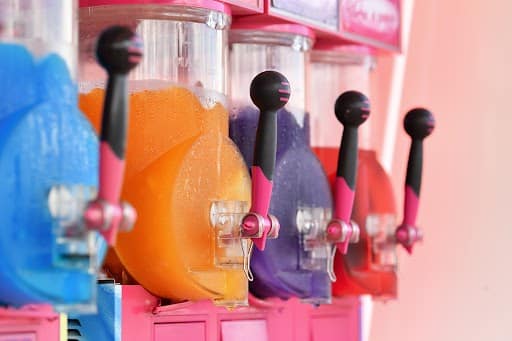What is pink mould and how do I prevent it in my business?


The first rule of running a food business, just like a doctor, is do no harm. It is vital your food and drink is safe for consumers. Many food-based bacteria are well-known, as are the ways to prevent them. Undercooked meat, poultry, and eggs can cause salmonella poisoning; undercooked chicken can carry Campylobacter. One lesser-known bacterial growth, however, is pink mould. But what is it, how does it form, and what can you do to prevent it from getting your customers sick?
Contrary to its name, pink mould is not actually mould. It is a bacterium called Serratia marcescens. Much like many other types of bacteria, it loves warm, damp places. It also tends to grow in the dark. This means that many of the machines in your kitchen can be the perfect breeding ground for pink mould. It is most commonly found in machines that operate using water. This includes dishwashers and glasswashers, and ice machines, which you may use all year round. It is also common in machines used more often during the summer, like slushy machines or soft-serve ice cream machines.
Pink mould is airborne– once it forms inside your machines, it can be spread across all of the machine’s contents. This means your “clean” glasses and dishes or your fresh ice would be coated in bacteria. This, unsurprisingly, would put your customers’ health at risk. Pink mould is particularly dangerous for vulnerable customers. These include young children, the elderly, and those with pre-existing health conditions. In large doses or with repeated exposure, anyone could be affected by it. Symptoms of pink mould are broad. These include difficulty breathing, bladder issues, vomiting, and pneumonia. When considering the pre-existing vulnerabilities of some of your customers, it can be fatal. This is why preventing bacterial build-up is so vital.
Most people only become aware of pink mould when they see contamination. If pink mould is visible on your ice creams or your dishes, it’s already too late. This is a sign that the bacteria has been building up inside your machine for so long that it has come out of your machine. Instead of waiting until you see contamination to realise you have a problem, be proactive.
Check the visible part of your machines daily for visible signs of bacteria. About once a week, check the insides of your ice machines and dishwashers with a torch. Regularly clean your machine, and if there are any signs of pink mould, stop using the machine until after it has been deep cleaned. Ensure that anything that comes into contact with your machines, such as an ice scoop, is clean to prevent cross-contamination. Finally, make sure that the machines are regularly serviced to ensure that they are working as intended. This will prevent build-up in the parts of the machine you cannot easily access to clean.
Preventing pink mould is not just good for your customers– it's good for business too. Clean machines and a process in place for preventing pink mould will help a food hygiene inspection. Having to turn off your ice machine or your soft-serve machine during the summer months can also limit sales, whilst a dishwasher or glasswasher being deep-cleaned will massively reduce productivity. It is therefore in your best interest to ensure you do everything you can to prevent pink mould.
Join 950,000+ learners
Explore our award winning online video based training
The Safer Food Group
Unit 2, Integrity House,
Lower Lumsdale, Matlock
DE4 5EX
Back
to top
© The Safer Food Group 2025 | Privacy policy